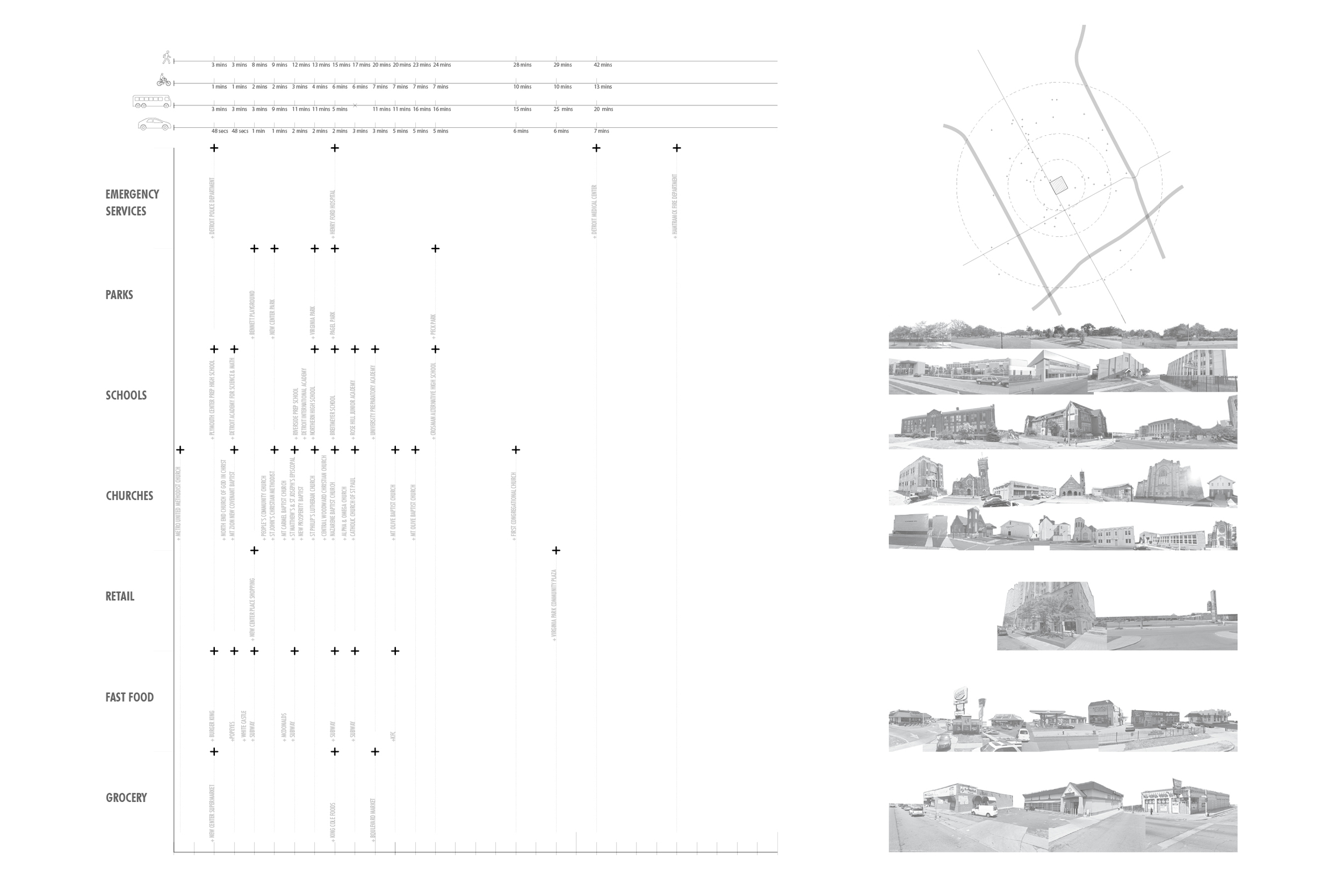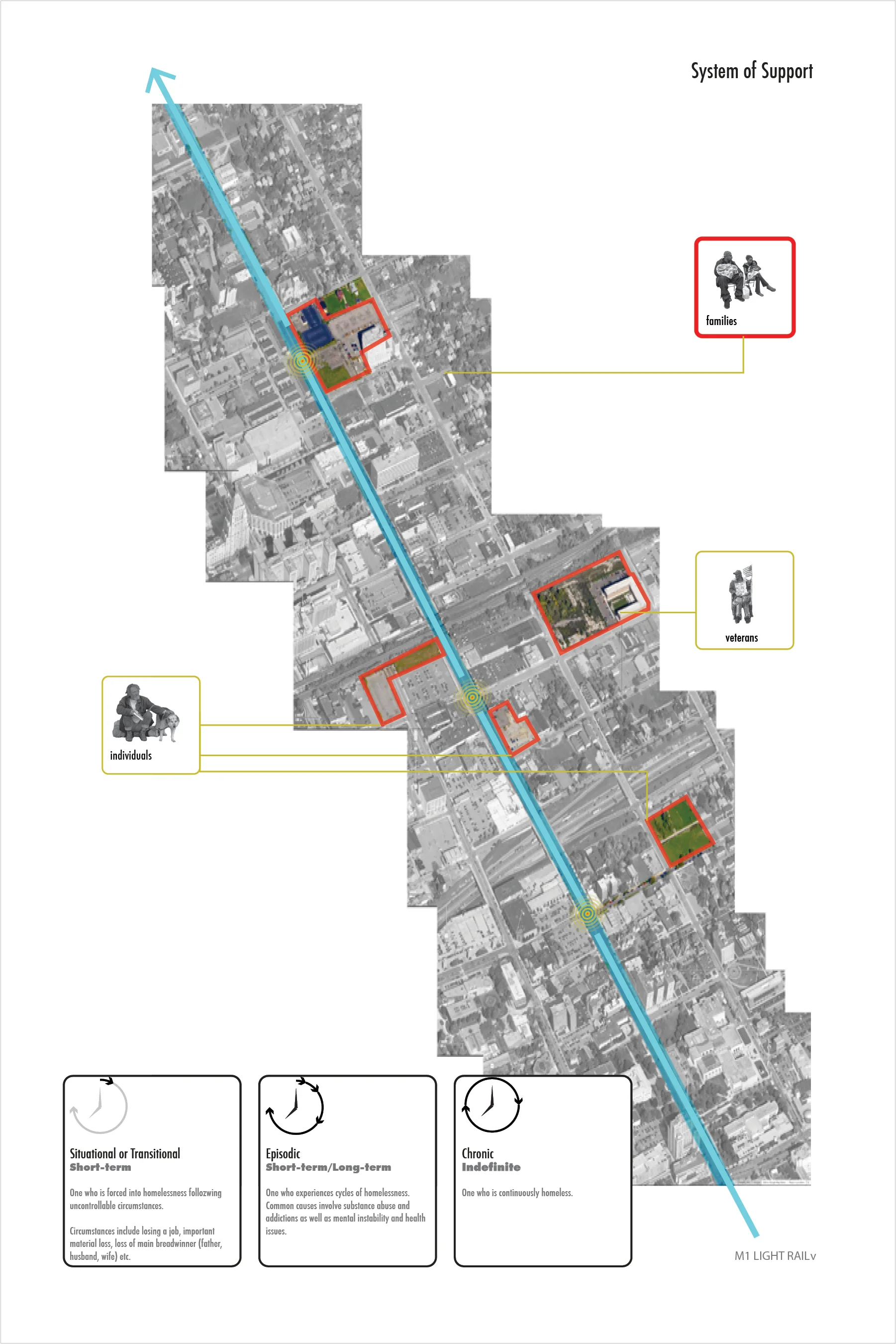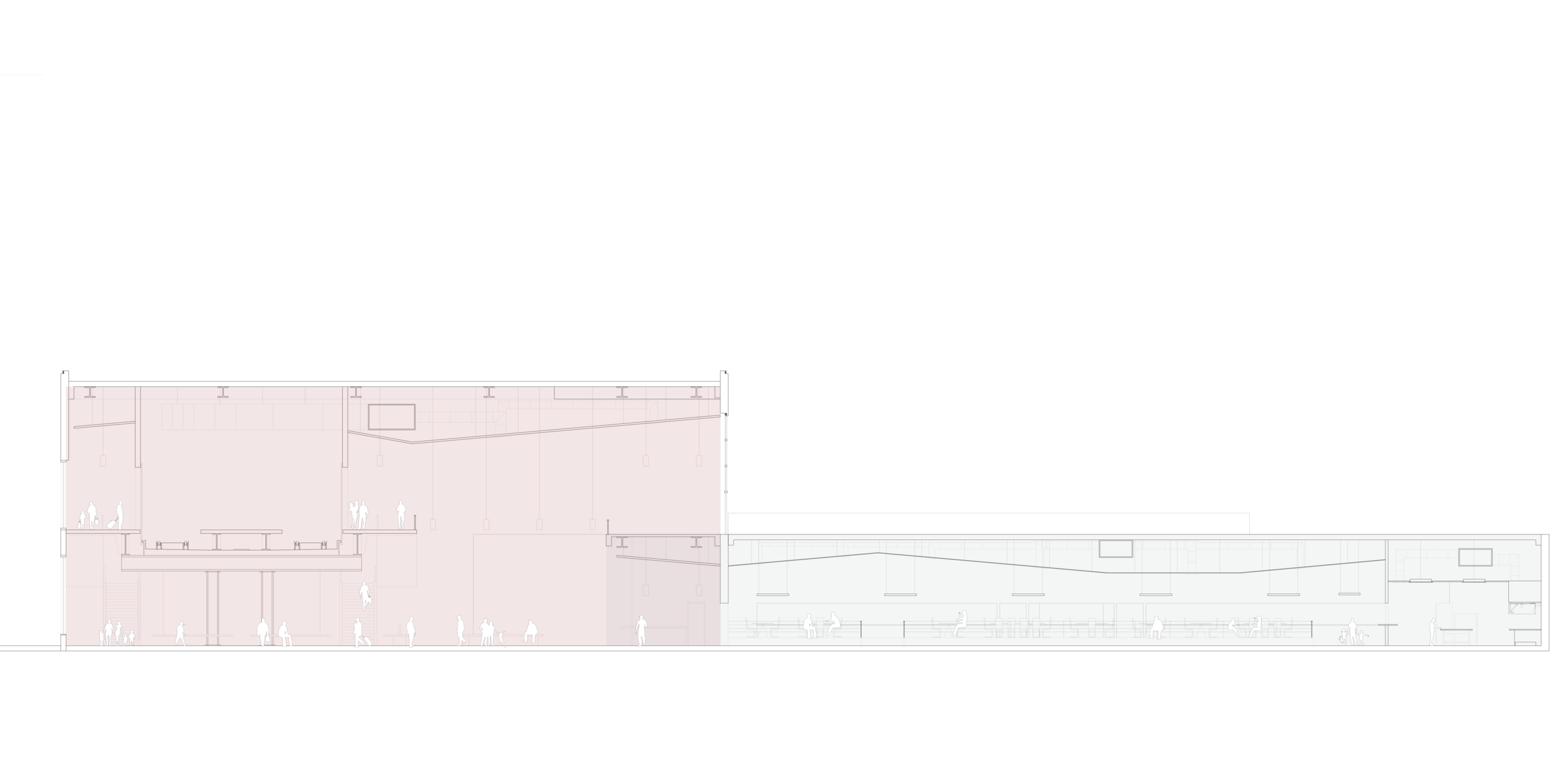University of Michigan
Winter 2013 Graduate Thesis Studio
Christian Unverzagt
Here are the facts: the largest concentration of the homeless population of Michigan is found in Detroit totaling nearly that of the population of Hamtramck at 22,813 people. The city does not currently have the capacity to aid more than 6,000 individuals on a given night. As the city struggles and fails to meet the high demand of support, less than 1,000 beds are dedicated to the 2,650 family households, where children outnumber the adults. Family households lose their homes to any number of reasons including foreclosure, loss of jobs, and lack of affordable housing. Factors as such force families into a state of transitional homelessness; relegated to move from shelter to shelter or worse, to live on the streets.
Architecture, on its own, cannot solve homelessness but it can play a large role as it possesses the ability to provide a sanctuary that does not exile a population; it can act as a model of acclimation. A place that blurs the lines as it seeks to transition and reconnect this population with the paramount aspiration of minimizing inter-generational homelessness. The hope is not to enable individuals who are not out to help themselves, the goal is to provide a space conducive for putting the pieces back together.
The agency of architecture will be explored in the form of an urban campus along a proposed system of nodes, each targeted toward various states and classifications of displaced individuals. Specifically, the homeless family household will be the first model tested. The M-1 Light Rail plays an integral role as it will serve as the spine: providing the arterial connection to each other and the city. The aggregation of campuses will not only provide for the homeless, they will contribute to the city at large; rendering civic spaces and services derived from local programmatic scarcity. The campus explores the fusion of unlikely adjacencies and user interactions intended to create an environment of inclusion.
Architecture can break the cycle; it can serve as a stepping-stone back to society.










